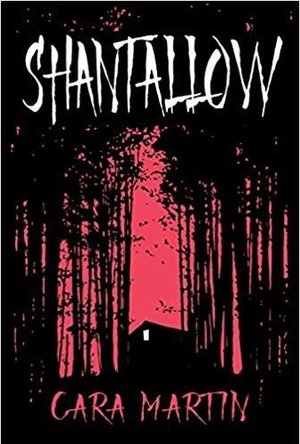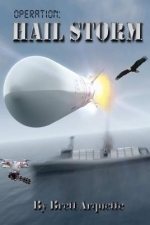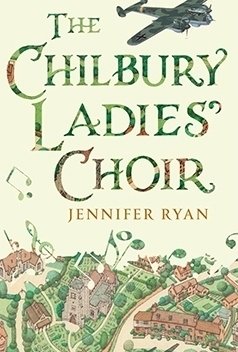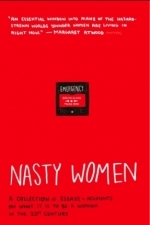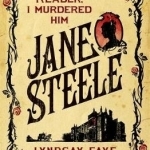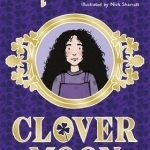Search
Heather Cranmer (2721 KP) rated Shantallow in Books
Aug 31, 2019
Supernatural horror is one of my favorite genres. Through the blogging universe, I came across Shantallow by Cara Martin. After reading the synopsis, I was hooked. When the opportunity arose to review Shantallow, I couldn't turn it down. Luckily, I enjoyed it!
I felt like the plot of Shantallow was a little confused to begin with. It started out as a teen love story between to high school kids gone wrong thanks to jealousy. However, after about thirty percent through the book, it quickly became a supernatural horror story about an evil haunted house. I thought this would focus on the nightmare that the main character, Misha, has about Tanvi. The nightmare, to me, only seems brushed upon. This didn't take away my enjoyment from the story though. I will admit that the whole love story in the beginning was a bit slow, and I did find myself wondering if I should continue. I'm really glad I persevered because after the love story, this book really takes off. It was as if Shantallow sank it's teeth into my attention span and didn't let go. I couldn't wait to see what would happen next in the evil house known as Shantallow. The creepy factor was definitely there throughout!
The ending of Shantallow felt a little as if the author didn't know how to end the book. It seemed rushed and too quick to end without being explained. Although Shantallow didn't end in any cliffhangers, I was still left with unanswered questions. Perhaps Shantallow will end up being a series, and my questions about the house will be answered.
The diversity of characters in Shantallow was done fantastically. I also enjoyed each of the characters once this book got going. Tanvi was an interesting character throughout the book. Although I could picture all the characters in my mind, Tanvi was the easiest one to bring alive in my head. She felt so realistic and like she could be someone I know. Misha comes across as really selfish, jealous, and controlling to being with. However, he redeems himself during his time in the Shantallow house with how protective he is over everyone. Lauren was my favorite character. I loved scenes that she was in. She seemed like such a sweet innocent kid.
Trigger warnings for Shantallow include violence, jealousy, murder, death, attempted murder, profanity, sex between teens (although not graphic), evil spirits, and underage drinking.
Despite the hurried ending, Shantallow really is a good read. It's got a very spooky plot and great characters once you get past the love story. I would recommend Shantallow by Cara Martin to older teens and adults aged 17+. If you love scary stories that will keep you up late at night reading with the lights on, Shantallow is the book for you! It definitely made my nights scarier (but I enjoy being scared)!
--
(A special thank you to Xpresso Book Tours for providing me with an eBook of Shantallow by Cara Martin in exchange for an honest and unbiased review.)
I felt like the plot of Shantallow was a little confused to begin with. It started out as a teen love story between to high school kids gone wrong thanks to jealousy. However, after about thirty percent through the book, it quickly became a supernatural horror story about an evil haunted house. I thought this would focus on the nightmare that the main character, Misha, has about Tanvi. The nightmare, to me, only seems brushed upon. This didn't take away my enjoyment from the story though. I will admit that the whole love story in the beginning was a bit slow, and I did find myself wondering if I should continue. I'm really glad I persevered because after the love story, this book really takes off. It was as if Shantallow sank it's teeth into my attention span and didn't let go. I couldn't wait to see what would happen next in the evil house known as Shantallow. The creepy factor was definitely there throughout!
The ending of Shantallow felt a little as if the author didn't know how to end the book. It seemed rushed and too quick to end without being explained. Although Shantallow didn't end in any cliffhangers, I was still left with unanswered questions. Perhaps Shantallow will end up being a series, and my questions about the house will be answered.
The diversity of characters in Shantallow was done fantastically. I also enjoyed each of the characters once this book got going. Tanvi was an interesting character throughout the book. Although I could picture all the characters in my mind, Tanvi was the easiest one to bring alive in my head. She felt so realistic and like she could be someone I know. Misha comes across as really selfish, jealous, and controlling to being with. However, he redeems himself during his time in the Shantallow house with how protective he is over everyone. Lauren was my favorite character. I loved scenes that she was in. She seemed like such a sweet innocent kid.
Trigger warnings for Shantallow include violence, jealousy, murder, death, attempted murder, profanity, sex between teens (although not graphic), evil spirits, and underage drinking.
Despite the hurried ending, Shantallow really is a good read. It's got a very spooky plot and great characters once you get past the love story. I would recommend Shantallow by Cara Martin to older teens and adults aged 17+. If you love scary stories that will keep you up late at night reading with the lights on, Shantallow is the book for you! It definitely made my nights scarier (but I enjoy being scared)!
--
(A special thank you to Xpresso Book Tours for providing me with an eBook of Shantallow by Cara Martin in exchange for an honest and unbiased review.)
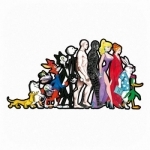
The Animator’s Survival Kit
Reference and Education
App
World-renowned animator and triple-Oscar-winner Richard Williams presents ‘The Animator’s...
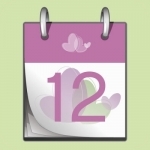
Fertility Friend FF App
Health & Fitness and Medical
App
Fertility Friend is the most trusted and accurate fertility tracker. This app is an advanced...
Hazel (1853 KP) rated Operation: Hail Storm in Books
Dec 22, 2017
Killing the Terrorists
I received this eBook for free from the author in exchange for an honest review.
In the near distant future, terrorism is still a major problem throughout the world. Other things may have changed, such as a female president of the United States and cheaper method of producing energy, however, the world is still under threat, particularly from North Korea. After losing his wife and twin daughters in the biggest terrorist attack the world has seen, Physics Nobel Prize winner, Marshall Hail, an industrial billionaire, decides to take matters into his own hands.
Operation: Hail Storm is a work of science fiction, although, as the main character points out, he and his team only work with science and not fiction. With a selection of friends from his MIT days, and a pick of young gamers whose families had been killed in the terrorist attacks, aim to remove everyone listed on the FBI’s top ten terrorist list. After his drones successfully take out the leader of North Korea, Hail finds himself of interest to the CIA and US president.
Hail hopes the CIA would be pleased with him and supply a list and location of the remaining terrorists. Although they are impressed, the CIA is baffled over how Hail managed to assassinate someone in an extremely guarded country. To prove himself, Hail is given the task of blowing up a missile that is heading to North Korea with the potential to destroy half the world. He may do this however he wishes, however, he must have one member of the CIA with him. Enter Kara.
Kara, who is effectively the CIA’s courtesan, tries to use her skills to find out Hail’s secrets and report back to her boss. Naturally, Hail and his team are one step ahead and are monitoring all her phone calls. With a complicated relationship where both parties are pretending to trust each other, they must come together to successfully complete the mission before the CIA put their disastrous backup plan into place.
Although there are a handful of women in high positions, Operation: Hail Storm is more appropriate for the male population. With complicated mathematics and science, the story becomes similar to spy action novels, complete with an attractive woman: Kara. Physical description is reserved for Kara’s character, whose beauty is used to distract men, particularly villains.
Description is something the author, Brett Arquette, struggles with throughout the book. His choice of similes are questionable and may even upset some readers, for example, “It was like a blob of clay the size of a softball that had been worked by an angry mental patient wearing oven gloves.”
As well as scientific jargon, a number of foreign languages enter the narrative. Unfortunately, although it is possible to get the gist of what is being said, the actual phrases are never translated.
Operation: Hail Storm is a cleverly thought out novel with an impressive knowledge of science, drones and explosive devices. Whether these are wholly accurate is undetermined, however, there do not appear to be any discrepancies during throughout the narrative. As for the storyline, it is nothing spectacular or refreshing, instead, it is a typical male-oriented piece of sci-fi with a lot of blowing things up.
(less)
In the near distant future, terrorism is still a major problem throughout the world. Other things may have changed, such as a female president of the United States and cheaper method of producing energy, however, the world is still under threat, particularly from North Korea. After losing his wife and twin daughters in the biggest terrorist attack the world has seen, Physics Nobel Prize winner, Marshall Hail, an industrial billionaire, decides to take matters into his own hands.
Operation: Hail Storm is a work of science fiction, although, as the main character points out, he and his team only work with science and not fiction. With a selection of friends from his MIT days, and a pick of young gamers whose families had been killed in the terrorist attacks, aim to remove everyone listed on the FBI’s top ten terrorist list. After his drones successfully take out the leader of North Korea, Hail finds himself of interest to the CIA and US president.
Hail hopes the CIA would be pleased with him and supply a list and location of the remaining terrorists. Although they are impressed, the CIA is baffled over how Hail managed to assassinate someone in an extremely guarded country. To prove himself, Hail is given the task of blowing up a missile that is heading to North Korea with the potential to destroy half the world. He may do this however he wishes, however, he must have one member of the CIA with him. Enter Kara.
Kara, who is effectively the CIA’s courtesan, tries to use her skills to find out Hail’s secrets and report back to her boss. Naturally, Hail and his team are one step ahead and are monitoring all her phone calls. With a complicated relationship where both parties are pretending to trust each other, they must come together to successfully complete the mission before the CIA put their disastrous backup plan into place.
Although there are a handful of women in high positions, Operation: Hail Storm is more appropriate for the male population. With complicated mathematics and science, the story becomes similar to spy action novels, complete with an attractive woman: Kara. Physical description is reserved for Kara’s character, whose beauty is used to distract men, particularly villains.
Description is something the author, Brett Arquette, struggles with throughout the book. His choice of similes are questionable and may even upset some readers, for example, “It was like a blob of clay the size of a softball that had been worked by an angry mental patient wearing oven gloves.”
As well as scientific jargon, a number of foreign languages enter the narrative. Unfortunately, although it is possible to get the gist of what is being said, the actual phrases are never translated.
Operation: Hail Storm is a cleverly thought out novel with an impressive knowledge of science, drones and explosive devices. Whether these are wholly accurate is undetermined, however, there do not appear to be any discrepancies during throughout the narrative. As for the storyline, it is nothing spectacular or refreshing, instead, it is a typical male-oriented piece of sci-fi with a lot of blowing things up.
(less)
Hazel (1853 KP) rated The Chilbury Ladies' Choir in Books
May 23, 2017
Wartime Fiction
This eBook was provided by the publisher via NetGalley in exchange for an honest review
"Just because the men have gone to war, why do we have to close the choir? And precisely when we need it most!"
Set in the fictional village of Chilbury, Kent during the Second World War, The Chilbury Ladies’ Choir explores the lives of the women left behind whilst the men go off to fight. The remaining villagers are disappointed at the closing of the church choir, which, according to the vicar, cannot go on without any men to sing the tenor and bass parts. However, the arrival of bold, forthright Primrose Trent brings the birth of a new choir, a choir for women only.
Although a war is going on, the ladies of Chilbury have so many other things on their minds. Told through a conflation letters and diary entries, The Chilbury Ladies’ Choir reveals the everyday lives of a handful of characters. Mrs Tilling’s journal provides an overview of the general events, whilst 18-year-old Venetia’s letters divulge the wiles and charms she uses in the name of romance. Other characters, particularly the young teenager, Kitty, offer other insights to the goings on in the village.
From falling in love, to having babies, The Chilbury Ladies’ Choir is full of secrets, schemes and misunderstandings that almost let the villagers forget there is a war on. However, the effects of war do reach the little village, bringing with it terror and grief.
The individual stories that make up the book provide the reader with a number of scenarios that are full of emotion, but equally entertain. One moment the horror of war could leave readers in flood of tears, the next, Mrs B.’s pretentious personality and vaunting comments bring amusement and laughter.
All the while these events are playing out, the Chilbury Ladies’ Choir pulls the women together, providing them with a source of comfort to get them through the terrible times. No matter what disasters befall them, whether caused by war or their own actions, joining together in song gives them a purpose and opportunity to have a break from their fears and grief. War may destroy, but they will carry on singing.
Written in the manner of private letters and journals gives the novel a personal touch. The story is not merely narrated, it is expressed through the emotion and feelings of individual characters, making the scenarios seem more authentic. The downside to this method is the lack of distinction between each character’s voices. With no detectable dialect, the musings of a 13-year-old are composed in much the same manner as the much older Mrs Tilling.
The Chilbury Ladies’ Choir is an enjoyable piece of historical literature, which is bound to appeal to many people. Although set during World War II, its primary focus is on the people in the village, making it more attractive to readers who are fed up of reading about bombs and fighting. A mix of family issues, bribery and romance provide considerably more entertainment than a generic wartime novel. Being Jennifer Ryan’s debut novel, The Chilbury Ladies’ Choir is of a quality that suggests the author has so much more to deliver in the not-so-distant future.
"Just because the men have gone to war, why do we have to close the choir? And precisely when we need it most!"
Set in the fictional village of Chilbury, Kent during the Second World War, The Chilbury Ladies’ Choir explores the lives of the women left behind whilst the men go off to fight. The remaining villagers are disappointed at the closing of the church choir, which, according to the vicar, cannot go on without any men to sing the tenor and bass parts. However, the arrival of bold, forthright Primrose Trent brings the birth of a new choir, a choir for women only.
Although a war is going on, the ladies of Chilbury have so many other things on their minds. Told through a conflation letters and diary entries, The Chilbury Ladies’ Choir reveals the everyday lives of a handful of characters. Mrs Tilling’s journal provides an overview of the general events, whilst 18-year-old Venetia’s letters divulge the wiles and charms she uses in the name of romance. Other characters, particularly the young teenager, Kitty, offer other insights to the goings on in the village.
From falling in love, to having babies, The Chilbury Ladies’ Choir is full of secrets, schemes and misunderstandings that almost let the villagers forget there is a war on. However, the effects of war do reach the little village, bringing with it terror and grief.
The individual stories that make up the book provide the reader with a number of scenarios that are full of emotion, but equally entertain. One moment the horror of war could leave readers in flood of tears, the next, Mrs B.’s pretentious personality and vaunting comments bring amusement and laughter.
All the while these events are playing out, the Chilbury Ladies’ Choir pulls the women together, providing them with a source of comfort to get them through the terrible times. No matter what disasters befall them, whether caused by war or their own actions, joining together in song gives them a purpose and opportunity to have a break from their fears and grief. War may destroy, but they will carry on singing.
Written in the manner of private letters and journals gives the novel a personal touch. The story is not merely narrated, it is expressed through the emotion and feelings of individual characters, making the scenarios seem more authentic. The downside to this method is the lack of distinction between each character’s voices. With no detectable dialect, the musings of a 13-year-old are composed in much the same manner as the much older Mrs Tilling.
The Chilbury Ladies’ Choir is an enjoyable piece of historical literature, which is bound to appeal to many people. Although set during World War II, its primary focus is on the people in the village, making it more attractive to readers who are fed up of reading about bombs and fighting. A mix of family issues, bribery and romance provide considerably more entertainment than a generic wartime novel. Being Jennifer Ryan’s debut novel, The Chilbury Ladies’ Choir is of a quality that suggests the author has so much more to deliver in the not-so-distant future.
Hazel (1853 KP) rated Birds Art Life Death: A Field Guide to the Small and Significant in Books
May 23, 2017
Unconventional Field Guide
This eBook was provided by the publisher via NetGalley in exchange for an honest review
There comes a time when novelists, as with any creative professional, become unmotivated or at a loss as to what to write about – writer’s block. Such an occurrence happened to children’s novelist, Kyo Maclear. Through the work of her songwriter husband, Maclear discovers a musician struggling with the demands of his career in a competitive world, causing anxiety and depression. In order to distance himself from the stresses of his employment, the musician finds solace in bird watching. Intrigued as to what prompted his ardent interest in birds, Maclear tags along with him for a year, and thus, Birds Art Life Death: A Field Guide to the Small and Significant was born.
To preempt any confusion, despite what the title may suggest, this book is not a field guide about birds. When Maclear began talking to the musician (who remains anonymous except for a mention in the acknowledgements), she was completely nescient on the subject of birds and had a lot to learn. Although some facts are stated in the narrative, Birds Art Life Death is more a reflective memoir of the author’s life. Using bird watching as a key example, Maclear explores the ways artists of all kinds have retreated from the pressures of everyday life in order to take time to appreciate the smaller, less celebrated aspects.
Bird watching, in particular, provides the musician and Maclear the opportunity to sit still (literally) and just be. Paying attention to the numerous habitats of the winged-creatures provides the author with a new outlook on life, and fodder to include in future works (hence this book). It also gives her the opportunity to reflect on her past, her parents – particularly her anticipatory grief toward her elderly father – her husband, and her sons. In fact, the author’s own life features as heavily as the bird watching trips she goes on.
Written in chronological order from winter through to autumn, Maclear’s knowledge of birds increases, as does her awareness of the world and life around her. However, her sequence of events is often interrupted by retrospective thought and additional research, which causes the book to head in too many directions at once. It is as though the author’s disorganized mind has been spilled onto the page for everyone to see.
It is clear, however, that Maclear has put an exceptional amount of time into researching the topic of birds. She does not regurgitate factual, mundane information about the species; instead she has delved deeper and from an artistic point of view, to discover so much more than an encyclopedic textbook would provide.
From a myriad of resources, Maclear has pulled out quotes from bird enthusiasts and creative individuals alike to emphasise the effects birds have had on people’s lives and artistic careers. Interestingly, many artists and authors have found the delicate creatures fascinating and included them in their works, for example: Leonardo da Vinci, Charles Dickens, William Faulkner and Iris Murdoch.
Birds Art Life Death is unlikely to increase your knowledge of birds or bird watching, however it may inspire you to take time out to explore and enjoy nature. Whether you are a creative individual in need of a break, or an office worker desperately wanting some fresh air, Maclear encourages you to step back from the trials of life and find pleasure in the little, but highly significant, facts of being.
There comes a time when novelists, as with any creative professional, become unmotivated or at a loss as to what to write about – writer’s block. Such an occurrence happened to children’s novelist, Kyo Maclear. Through the work of her songwriter husband, Maclear discovers a musician struggling with the demands of his career in a competitive world, causing anxiety and depression. In order to distance himself from the stresses of his employment, the musician finds solace in bird watching. Intrigued as to what prompted his ardent interest in birds, Maclear tags along with him for a year, and thus, Birds Art Life Death: A Field Guide to the Small and Significant was born.
To preempt any confusion, despite what the title may suggest, this book is not a field guide about birds. When Maclear began talking to the musician (who remains anonymous except for a mention in the acknowledgements), she was completely nescient on the subject of birds and had a lot to learn. Although some facts are stated in the narrative, Birds Art Life Death is more a reflective memoir of the author’s life. Using bird watching as a key example, Maclear explores the ways artists of all kinds have retreated from the pressures of everyday life in order to take time to appreciate the smaller, less celebrated aspects.
Bird watching, in particular, provides the musician and Maclear the opportunity to sit still (literally) and just be. Paying attention to the numerous habitats of the winged-creatures provides the author with a new outlook on life, and fodder to include in future works (hence this book). It also gives her the opportunity to reflect on her past, her parents – particularly her anticipatory grief toward her elderly father – her husband, and her sons. In fact, the author’s own life features as heavily as the bird watching trips she goes on.
Written in chronological order from winter through to autumn, Maclear’s knowledge of birds increases, as does her awareness of the world and life around her. However, her sequence of events is often interrupted by retrospective thought and additional research, which causes the book to head in too many directions at once. It is as though the author’s disorganized mind has been spilled onto the page for everyone to see.
It is clear, however, that Maclear has put an exceptional amount of time into researching the topic of birds. She does not regurgitate factual, mundane information about the species; instead she has delved deeper and from an artistic point of view, to discover so much more than an encyclopedic textbook would provide.
From a myriad of resources, Maclear has pulled out quotes from bird enthusiasts and creative individuals alike to emphasise the effects birds have had on people’s lives and artistic careers. Interestingly, many artists and authors have found the delicate creatures fascinating and included them in their works, for example: Leonardo da Vinci, Charles Dickens, William Faulkner and Iris Murdoch.
Birds Art Life Death is unlikely to increase your knowledge of birds or bird watching, however it may inspire you to take time out to explore and enjoy nature. Whether you are a creative individual in need of a break, or an office worker desperately wanting some fresh air, Maclear encourages you to step back from the trials of life and find pleasure in the little, but highly significant, facts of being.
Jamie (131 KP) rated Nasty Women in Books
May 24, 2017
A timely collection of personal and political essays
It was really cool to get to see the world through the eyes of women coming from walks of life entirely removed from my own. There were many whose struggles I couldn’t even begin to imagine dealing with, while others I found comfort that I wasn’t alone in the issues that I have faced. The anthology really does cover a wide range of topics by authors from drastically different backgrounds.
The one essay that stood out the most to me was “Choices” by Rowan C. Clarke, which discussed the author’s difficult relationship with her mother and that never ending struggle to please. While the underlying messages in all of the stories were political and feminist, they were also very personal and down to earth which is what made this collection pretty emotional.
I did have a few issues with the anthology, however, that I need to address. The first was that the quality of each essay varied pretty wildly. The version I read was an ARC so it’s difficult for me to judge the final product, but there were several that weren’t well structured or were rife with grammatical and formatting errors. There were citations (I love citations!) that weren’t formatted all that well for my ebook version (cutting into the middle of paragraphs) that perhaps would’ve been better placed at the end. As for the actual content, most were incredibly well written and heartfelt, a few felt like angry rants that were more alienating than empowering, then there was one that just felt stiff and spent more time with the preface rather than the story.
While on the subject of alienation, despite the rather diverse sets of authors and essays, I feel like there were some missing pieces still. It’s obvious from the title what many of the authors thought about the last election and I didn’t like how black and white things were with barely any room in-between. In cases like this, I’m sure most of the readers would be those looking for confirmation of beliefs that they already share, which is fine except that it closes the door on discussion with the other side which is truly unfortunate.
Don’t get me wrong, I think that what was already here was pretty great. I see what they were going for and I appreciated it. I love to see discussion about politics and social issues, but I worry when the tone leans too far toward one extreme it only invites backlash from the other extreme. It’s a difficult balancing act between maintaining one’s own core beliefs while also trying to open things up to the other side so that perhaps they could engage in the conversation and, ideally, listen and have their own perceptions changed.
But I digress, despite the complaints I had about the book, I found it to be a pretty quick and enjoyable read. It gives a voice to groups of women that aren’t often heard in the greater narrative of the feminist movement. The experiences of these many women enrich that narrative and there’s a lot we can all learn from each other especially in these troubling times.
The one essay that stood out the most to me was “Choices” by Rowan C. Clarke, which discussed the author’s difficult relationship with her mother and that never ending struggle to please. While the underlying messages in all of the stories were political and feminist, they were also very personal and down to earth which is what made this collection pretty emotional.
I did have a few issues with the anthology, however, that I need to address. The first was that the quality of each essay varied pretty wildly. The version I read was an ARC so it’s difficult for me to judge the final product, but there were several that weren’t well structured or were rife with grammatical and formatting errors. There were citations (I love citations!) that weren’t formatted all that well for my ebook version (cutting into the middle of paragraphs) that perhaps would’ve been better placed at the end. As for the actual content, most were incredibly well written and heartfelt, a few felt like angry rants that were more alienating than empowering, then there was one that just felt stiff and spent more time with the preface rather than the story.
While on the subject of alienation, despite the rather diverse sets of authors and essays, I feel like there were some missing pieces still. It’s obvious from the title what many of the authors thought about the last election and I didn’t like how black and white things were with barely any room in-between. In cases like this, I’m sure most of the readers would be those looking for confirmation of beliefs that they already share, which is fine except that it closes the door on discussion with the other side which is truly unfortunate.
Don’t get me wrong, I think that what was already here was pretty great. I see what they were going for and I appreciated it. I love to see discussion about politics and social issues, but I worry when the tone leans too far toward one extreme it only invites backlash from the other extreme. It’s a difficult balancing act between maintaining one’s own core beliefs while also trying to open things up to the other side so that perhaps they could engage in the conversation and, ideally, listen and have their own perceptions changed.
But I digress, despite the complaints I had about the book, I found it to be a pretty quick and enjoyable read. It gives a voice to groups of women that aren’t often heard in the greater narrative of the feminist movement. The experiences of these many women enrich that narrative and there’s a lot we can all learn from each other especially in these troubling times.
Hazel (1853 KP) rated Jane Steele in Books
May 24, 2017
Classic Retelling
This eBook was provided by the author in exchange for an honest review
“Reader, I murdered him.” Jane Steele is a gothic retelling of the renowned Jane Eyre written by the celebrated Charlotte Bronte. Crime writer, Lyndsay Faye, creates an entirely new story, whilst appropriating the skeletal structure of the original classic. However, Jane Steele is nothing like the Miss Eyre everyone is familiar with. She is far more headstrong and independent, and also a murderer.
Before readers are discouraged to hear that their beloved Jane is portrayed as a criminal, the murders that occur are more of a homicidal or self-defense nature, as opposed to premeditated serial killing. In fact the first death, occurring when she is a nine year old orphan, is not her fault at all, however it prompts Jane’s wealthy aunt to pack her off to boarding school, and thus the similarities with Jane Eyre commence.
Written in an autobiographical manner, Jane describes her years at the virulent school, where she and the other girls experience abuse at the hands of the ignoble schoolmaster. As readers will recall, Eyre’s life improves in her later school years, however Jane Steele’s education comes to a premature end, resulting in her fending for herself in 19th century London.
As the blurb indicates, Jane returns to the house she grew up in after the death of her aunt, affecting to be a governess for the current owner’s ward. Mr. Charles Thornfield, a bachelor, is Jane Steele’s version of Rochester, minus the wife in the attic. The contents of the cellar, on the other hand, are a different matter…
From a romantic point of view, all happens in a similar manner to Jane Eyre, however this is where the comparisons end. With concealed crimes and secrets, as well as an unsolved murder, the story becomes the thriller it initially proposed to be. The incisive Jane Steele takes matters into her own hands – figuratively and literally – as she determines to resolve the unanswered questions.
Although not written with the intent to be comical, the stark contrasts between original and retelling create humorous scenarios. The nature of the main character in comparison with the time frame, a period where women had very little rights, makes the narrative far more exciting and amusing than the earlier novel – although not necessarily better.
Lyndsay Faye maintains the atmosphere of the 1800s with her affinity for eloquent turns of phrase and choice of words. She is a prolific author full of wonderful ideas; her ability to create a new story out of a well-known classic is a formidable skill. What is admirable is they way in which Faye has made Jane Steele a novel in its own right, and not merely a rip-off of Bronte’s work.
The skillful composition and wording will likely be loved by all, its only downfall being the reaction of hardcore Jane Eyre fans. Those who wish for the classics to be left alone and not pulled apart by contemporary authors or film directors may adopt a negative attitude towards to publication of Jane Steele. On the other hand, many will absolutely love this gothic retelling, appreciate the similarities and enjoy the new twist to the storyline. Personally, I am with the latter group.
“Reader, I murdered him.” Jane Steele is a gothic retelling of the renowned Jane Eyre written by the celebrated Charlotte Bronte. Crime writer, Lyndsay Faye, creates an entirely new story, whilst appropriating the skeletal structure of the original classic. However, Jane Steele is nothing like the Miss Eyre everyone is familiar with. She is far more headstrong and independent, and also a murderer.
Before readers are discouraged to hear that their beloved Jane is portrayed as a criminal, the murders that occur are more of a homicidal or self-defense nature, as opposed to premeditated serial killing. In fact the first death, occurring when she is a nine year old orphan, is not her fault at all, however it prompts Jane’s wealthy aunt to pack her off to boarding school, and thus the similarities with Jane Eyre commence.
Written in an autobiographical manner, Jane describes her years at the virulent school, where she and the other girls experience abuse at the hands of the ignoble schoolmaster. As readers will recall, Eyre’s life improves in her later school years, however Jane Steele’s education comes to a premature end, resulting in her fending for herself in 19th century London.
As the blurb indicates, Jane returns to the house she grew up in after the death of her aunt, affecting to be a governess for the current owner’s ward. Mr. Charles Thornfield, a bachelor, is Jane Steele’s version of Rochester, minus the wife in the attic. The contents of the cellar, on the other hand, are a different matter…
From a romantic point of view, all happens in a similar manner to Jane Eyre, however this is where the comparisons end. With concealed crimes and secrets, as well as an unsolved murder, the story becomes the thriller it initially proposed to be. The incisive Jane Steele takes matters into her own hands – figuratively and literally – as she determines to resolve the unanswered questions.
Although not written with the intent to be comical, the stark contrasts between original and retelling create humorous scenarios. The nature of the main character in comparison with the time frame, a period where women had very little rights, makes the narrative far more exciting and amusing than the earlier novel – although not necessarily better.
Lyndsay Faye maintains the atmosphere of the 1800s with her affinity for eloquent turns of phrase and choice of words. She is a prolific author full of wonderful ideas; her ability to create a new story out of a well-known classic is a formidable skill. What is admirable is they way in which Faye has made Jane Steele a novel in its own right, and not merely a rip-off of Bronte’s work.
The skillful composition and wording will likely be loved by all, its only downfall being the reaction of hardcore Jane Eyre fans. Those who wish for the classics to be left alone and not pulled apart by contemporary authors or film directors may adopt a negative attitude towards to publication of Jane Steele. On the other hand, many will absolutely love this gothic retelling, appreciate the similarities and enjoy the new twist to the storyline. Personally, I am with the latter group.
Hazel (1853 KP) rated Clover Moon in Books
May 24, 2017
A Victorian Story
This eBook was provided by the publisher via NetGalley in exchange for an honest review
Although now in her seventies, the Nation’s favourite children’s author, Dame Jacqueline Wilson, is continuing to write after surpassing one hundred novels. Many children (mostly girls) grow up reading her stories, myself being amongst that number. Even my sister, who hated reading, purchased a number of her books. It has been well over a decade since I last read a Jacqueline Wilson, however after seeing her latest novel was available for review, I thought I would give it a go.
Clover Moon is set in poverty-stricken Victorian London, where eleven-year-old Clover, the eldest of six siblings, lives with her father and stepmother. Like many stepmother’s in children’s literature, Clover’s treats her like a slave – a position she is destined to stay in unless she gets a job in a factory. With no school to attend, Clover becomes a second mother to her younger brother’s and sisters, yet nothing can prepare her for the devastating impact a wave of Scarlet Fever brings. With only an old doll maker who cares about her, Clover is desperate to get out of her situation; so after a chance meeting with an artist who tells her about a home for destitute girls, Clover decides to seek out the help and life she deserves.
Although only eleven, Clover has the responsibilities of someone of a more mature age. It is hard to imagine sending a child out to work, or trusting them to look after a newborn baby. Children reading this book will learn the difference between their lives and the life of a child in the 1800s.
As always, Jacqueline Wilson gives her main character a happy ending – although in this instance it still remains a bit uncertain. Despite the horrible circumstances, Wilson manages to pump her story full of enthusiastic optimism, thus portraying Clover as a strong, determined heroine.
Most of Jacqueline Wilson’s earlier books were set in the present day; there were still unhappy situations, but the settings were based on ideas the reader would be familiar with. In the case of Clover Moon, unless children have been educated about the poor in Victorian England, it is unlikely that they will be able to fully comprehend Clover’s predicament. As a result, the book is more suitable for young teenagers than the usual target audience of eight to twelve year olds.
Comparing my memories of Jacqueline Wilson books I read as a child with her latest publication, Clover Moon felt like something different; a new direction. As I have not read any of her work between the early 2000s and now, I am not sure when this change occurred, but it feels as though Wilson is delving deeper into her main character’s thoughts and feelings, and creating a more insightful storyline. On the other hand, I may simply be more intuitive as an adult than I was a child.
Although Clover Moon did not turn out to be the style of writing I was expecting I thoroughly enjoyed it. In fact, this difference made it possible to distance myself from the author’s renown, and treat it as an individual story. Clover is an admirable character who, through her narration, provides both an entertaining story and brief historical education. Fans of Jacqueline Wilson will not be disappointed with this latest publication; and if you are a new reader, Clover Moon is a great place to start.
Although now in her seventies, the Nation’s favourite children’s author, Dame Jacqueline Wilson, is continuing to write after surpassing one hundred novels. Many children (mostly girls) grow up reading her stories, myself being amongst that number. Even my sister, who hated reading, purchased a number of her books. It has been well over a decade since I last read a Jacqueline Wilson, however after seeing her latest novel was available for review, I thought I would give it a go.
Clover Moon is set in poverty-stricken Victorian London, where eleven-year-old Clover, the eldest of six siblings, lives with her father and stepmother. Like many stepmother’s in children’s literature, Clover’s treats her like a slave – a position she is destined to stay in unless she gets a job in a factory. With no school to attend, Clover becomes a second mother to her younger brother’s and sisters, yet nothing can prepare her for the devastating impact a wave of Scarlet Fever brings. With only an old doll maker who cares about her, Clover is desperate to get out of her situation; so after a chance meeting with an artist who tells her about a home for destitute girls, Clover decides to seek out the help and life she deserves.
Although only eleven, Clover has the responsibilities of someone of a more mature age. It is hard to imagine sending a child out to work, or trusting them to look after a newborn baby. Children reading this book will learn the difference between their lives and the life of a child in the 1800s.
As always, Jacqueline Wilson gives her main character a happy ending – although in this instance it still remains a bit uncertain. Despite the horrible circumstances, Wilson manages to pump her story full of enthusiastic optimism, thus portraying Clover as a strong, determined heroine.
Most of Jacqueline Wilson’s earlier books were set in the present day; there were still unhappy situations, but the settings were based on ideas the reader would be familiar with. In the case of Clover Moon, unless children have been educated about the poor in Victorian England, it is unlikely that they will be able to fully comprehend Clover’s predicament. As a result, the book is more suitable for young teenagers than the usual target audience of eight to twelve year olds.
Comparing my memories of Jacqueline Wilson books I read as a child with her latest publication, Clover Moon felt like something different; a new direction. As I have not read any of her work between the early 2000s and now, I am not sure when this change occurred, but it feels as though Wilson is delving deeper into her main character’s thoughts and feelings, and creating a more insightful storyline. On the other hand, I may simply be more intuitive as an adult than I was a child.
Although Clover Moon did not turn out to be the style of writing I was expecting I thoroughly enjoyed it. In fact, this difference made it possible to distance myself from the author’s renown, and treat it as an individual story. Clover is an admirable character who, through her narration, provides both an entertaining story and brief historical education. Fans of Jacqueline Wilson will not be disappointed with this latest publication; and if you are a new reader, Clover Moon is a great place to start.
